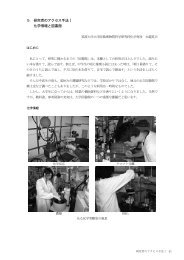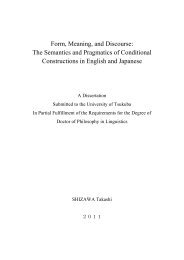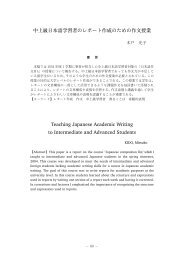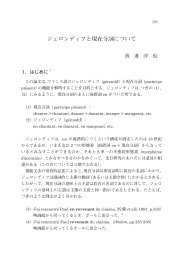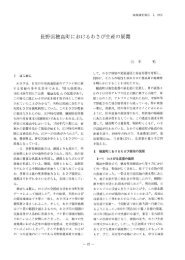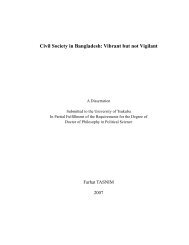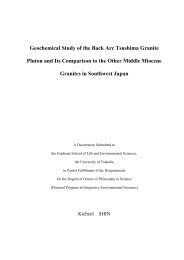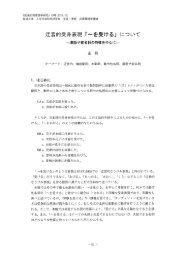Gamma Rays and CarbonIon-Beams Irradiation for Mutation ...
Gamma Rays and CarbonIon-Beams Irradiation for Mutation ...
Gamma Rays and CarbonIon-Beams Irradiation for Mutation ...
Create successful ePaper yourself
Turn your PDF publications into a flip-book with our unique Google optimized e-Paper software.
experiments involving various biological materials. In particular, the<br />
induction of chromosomal aberrations, mutations <strong>and</strong> neoplastic<br />
trans<strong>for</strong>mations was observed in various metabolically active cells from<br />
yeast <strong>and</strong> mammals. When high-frequency electromagnetic radiation or<br />
very penetrating heavy charged particles interact with biological material, a<br />
great deal of energy is dissipated in the cell. In addition, the interaction of<br />
ionizing radiation free or bound water molecules leads to the generation of<br />
reactive oxygen species such as hydroxyl radicals. The radical reactions<br />
arising from the direct <strong>and</strong> indirect effects of gamma radiation or X-rays<br />
lead to various chemical modifications, which, in the case of DNA model<br />
compounds, are at least partly known: single- <strong>and</strong> double-str<strong>and</strong> DNA<br />
breaks, purine <strong>and</strong> pyrimidine base lesions, DNA-protein cross-links.<br />
However, it should be noted that the bulk of the modifications arising from<br />
exposure of cellular DNA to sparsely ionizing radiation remains, <strong>for</strong> the<br />
most part, unknown. The use of high LET radiation provided by<br />
accelerators has allowed investigations of DNA damage at the cellular level.<br />
In particular, DNA double-str<strong>and</strong> cleavages <strong>and</strong> chromatin breaks have<br />
been measured by using sensitive techniques in bacterial <strong>and</strong> mammalian<br />
cells. Induction of DNA double-str<strong>and</strong> breaks in cells has been found to be<br />
linear with dose <strong>for</strong> all heavy ions investigated.<br />
Ottolenghi et al. (1999) in their studies about chromosome<br />
aberration induction by ionizing radiation mentioned that a large number of<br />
experimental data sets showed visual chromosome aberrations at the first<br />
post-irradiation mitosis due to chromosome breakage <strong>and</strong> illegitimate<br />
reunion of the pieces (misrejoining or misrepair) if cells are exposed to<br />
ionizing radiation during the G0/G1 phase of the cycle. If all chromosomes<br />
are stained with the same color (Giemsa staining), the following three main<br />
categories of aberrations are detectable: (i) dicentrics, produced by two<br />
breaks on two distinct chromosomes (inter- chromosome exchanges); (ii)<br />
20




